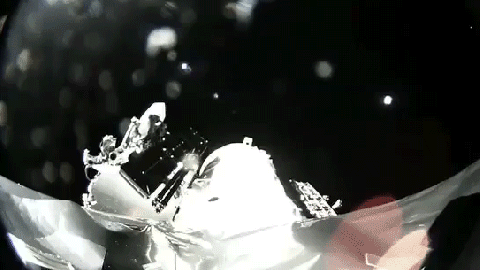Elon Musk’s SpaceX approved to launch 7,518 Starlink satellites into orbit

- SpaceX plans to launch 1,600 satellites over the next few years, and to complete its full network over the next six.
- Blanketing the globe with wireless internet-providing satellites could have big implications for financial institutions and people in rural areas.
- Some are concerned about the proliferation of space debris in Earth’s orbit.
The Federal Communications Commissions has approved the last key request of SpaceX’s plan to provide the globe with wireless internet beamed from thousands of satellites, a project known as Starlink.
On Thursday, the FCC said the private aerospace company can launch an additional 7,518 satellites into orbit, bringing the total number of approved satellites to about 12,000. The commission first approved the launch of 4,400 Starlink satellites in March following the company’s successful deployment of two test satellites. SpaceX plans to launch the first 1,600 satellites within the next few years, and to launch a full network of internet-providing satellites over the next six.
SpaceX CEO Elon Musk said the goal is to create a new kind of global communications system.
“This is quite an ambitious effort,” Musk said in 2016. “We’re really talking about something which is, in the long term, like rebuilding the internet in space.”
Low Earth orbit
Internet-providing satellites have been around for years, as I wrote in an article on the Starlink project from April. However, they’re typically expensive and provide slower service than land-based internet infrastructure. This is mainly because it takes a relatively long time for a signal to travel from the satellite to the host. SpaceX plans to solve this problem by launching satellites into low Earth orbit–just hundreds of miles up, in order to reduce the “latency,” or time it takes for the signal to travel.
However, the problem with this low-orbit solution is that it reduces the amount of surface area to which each satellite is able to provide service. That means SpaceX will need lots of satellites if it wants to cover the globe with wireless service. To accomplish this, SpaceX plans to launch about one-third of its 12,000 satellites into low Earth orbit, about 680 miles above ground, and the remainder into very-low Earth orbit, about 210 miles up. The satellites would communicate in a peer-to-peer system, using a combination of lasers and radio waves.
The implications of a faster connection
In addition to providing internet access to rural areas and other places where infrastructure is lacking, one institution stands to gain tremendously from the Starlink network: banks.
In the financial practice known as high-frequency trading, shaving mere microseconds off of latency can give traders an extraordinarily lucrative advantage in the market. Financial institutions would likely shell out billions for dedicated service, which would help SpaceX maintain its costly constellation of satellites.
The dangers of space debris
Some are concerned about the proliferation of space debris in Earth’s orbit, including NASA administrator Jim Bridenstine.
The U.S. military already tracks more than 500,000 pieces of space junk flying around the planet at lethal speeds.
“My favorite example is an innocuous little screwdriver that slipped through an astronaut’s grasp and has been circling low Earth orbit at up to 21,600 miles per hour for the last 35 years,” said FCC Commissioner Jessica Rosenworcel. “At these speeds, even a common household item can wreak havoc.”
On Thursday, the FCC published a proposal designed to limit the amount of space debris brought into orbit by the satellite industry. The commission also signed off on plans for three other companies to launch internet-providing satellites into orbit: Kepler, Telesat and Leosat, all of which are competing with SpaceX to build the world’s dominant satellite internet network.





